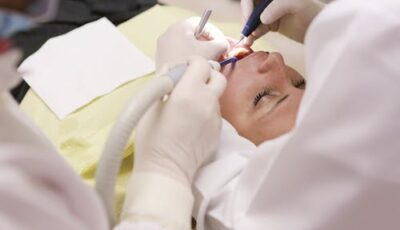
Taking a closer look at the dental industry, one of the things you’ll notice is how complex and intricate some processes are. One of these is dental bone grafting. Knowing the essentials of dental bone graft helps us understand why, sometimes, people need to undergo this procedure before getting dental implants.
What Is a Dental Bone Graft?
Dental bone grafting is a procedure done to increase the volume of the jawbone. It’s performed by using a piece of bone, which could be your own or from a donor, and attaching it to the deficient part of your jawbone. This bone then fuses with your natural bone, creating a stronger foundation.
The goal of a dental bone graft is to create a stable and strong foundation for dental implants or to restore bone volume and density in areas of the jaw where it has been lost due to:
- Tooth extraction: After removing a tooth, the surrounding bone may resorb or shrink over time. A bone graft can help preserve and rebuild this bone.
- Periodontal (gum) disease: Advanced gum disease can lead to bone loss around teeth. Bone grafting may be necessary to regenerate the lost bone.
- Trauma: Facial injuries or fractures can result in the loss of the jawbone, which may require grafting to reconstruct the damaged area.
- Congenital defects: Some individuals are born with jawbone abnormalities that may be corrected with bone grafts.
- Resorption due to missing teeth: When teeth are missing for an extended period, the jawbone in those areas can diminish. Bone grafting can help restore the bone for future tooth replacement.
Learn more about dental bone graft essentials by asking your trusted dentist or reading reliable sources online.
Types of Bone Grafts Used in Dental Procedures
- Autograft involves using the patient’s bone, typically harvested from another site in the body, such as the hip or chin. Autografts are considered the gold standard due to their compatibility but require an additional surgical site.
- Allograft: Donor bone tissue from a human cadaver is used for this type of graft. Allografts are processed and sterilized to minimize the risk of infection or rejection.
- Xenograft involves using bone from non-human sources, often bovine (cow) or porcine (pig) bone. Xenograft materials are processed to remove organic components and sterilized to prevent rejection.
- Synthetic grafts: Some bone graft materials are entirely synthetic and designed to mimic natural bone’s properties. These materials may include hydroxyapatite or other bioactive substances.
- Alloplastic grafts are graft materials made of synthetic substances like ceramics, polymers, or biocompatible metals.
When it’s about our oral health, search for the best dentist services in Owings Mills or our local areas, especially regarding dental bone grafts.
The Need for a Dental Bone Graft Before Implants
The need for a dental bone graft before dental implants is primarily driven by the requirement for a healthy and sufficient jawbone to support the dental implant. Here are some key reasons why a healthy jawbone is essential for the success of dental implants and why a bone graft may be necessary:
1. Implant Stability and Integration
Dental implants are designed to mimic natural teeth by anchoring themselves securely in the jawbone. A strong and healthy jawbone provides the necessary support for the implant to integrate successfully. During the healing process, bone cells, called osseointegration, gradually grow and fuse with the implant’s surface. This fusion is crucial for the long-term stability and function of the implant.
2. Chewing and Biting Function
A robust jawbone is essential for efficient and pain-free chewing and biting. When you bite down on food, the forces generated are transmitted through the implant to the jawbone. If the bone lacks density or volume, it may not withstand these forces, potentially leading to discomfort and implant complications.
3. Aesthetic Considerations
Beyond its functional role, the jawbone is pivotal in maintaining facial aesthetics. When teeth are lost, or the jawbone deteriorates, it can result in facial sagging or a sunken appearance. This can significantly impact a person’s self-esteem and overall facial harmony. Dental implants can help restore a natural and youthful appearance when supported by a healthy jawbone.
4. Preventing Implant Complications
Inadequate bone support can increase the risk of complications during implant placement and beyond. For example, if the implant is not securely anchored, it may shift or become loose over time. Additionally, insufficient bone can lead to complications like implant fracture or damage to nearby structures like nerves or sinus cavities. Proper bone grafting helps mitigate these risks.
5. Long-Term Success
Dental implant placement aims to provide a durable and long-lasting solution for missing teeth. A strong jawbone ensures the implant remains stable and functional for many years. The implant may fail prematurely without a sufficient bone foundation, necessitating costly and time-consuming revisions.
Because of this discussion, you may find yourself exploring implants in Owings Mills or other places. Dental implants are a popular dental service, delivering a reliable replacement for missing teeth. They closely resemble natural teeth, and unlike dentures, they’re permanently secured into the jawbone, offering superior stability and convenience.
Conclusion
A dental bone graft is often a prerequisite to an implant procedure if your jawbone isn’t healthy enough to securely hold the implant. This complete understanding of the procedure and knowing the need for such processes can help alleviate concerns and provide clarity for those navigating their dental health journey.




